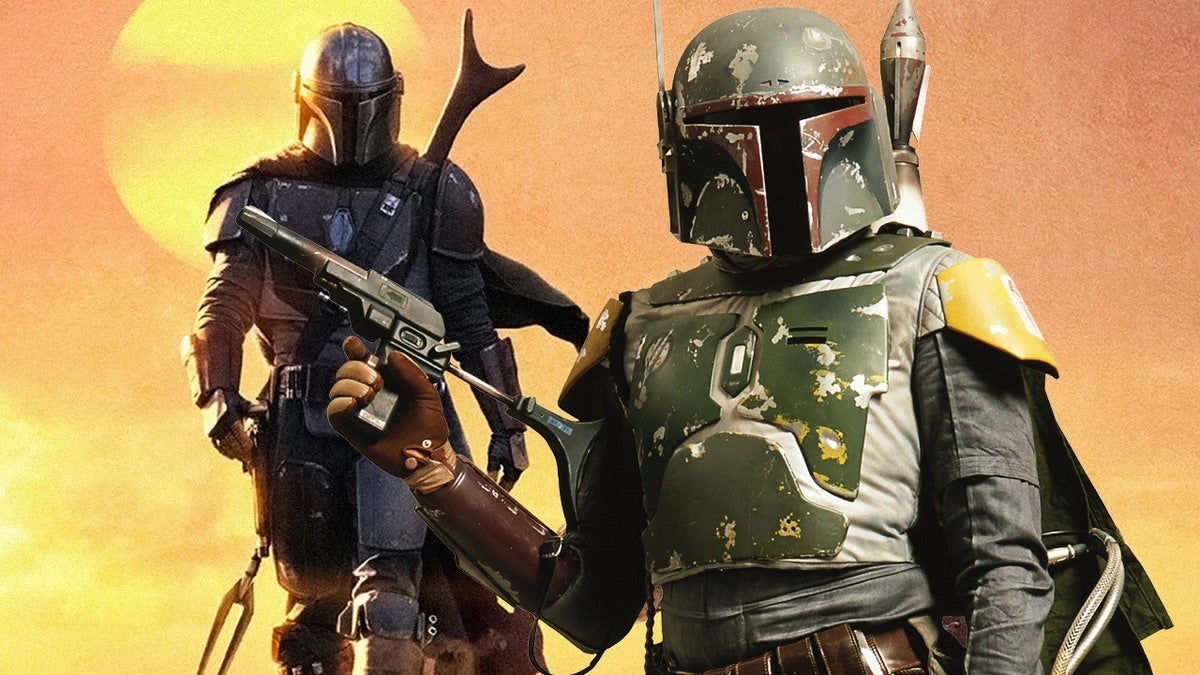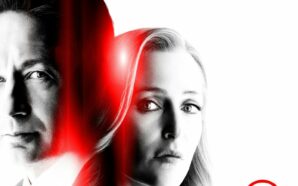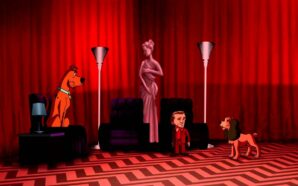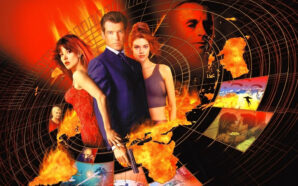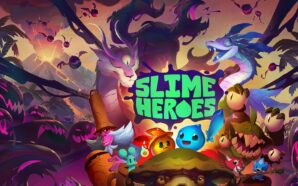“I recently encountered a man who wore Mandalorian armour. Jango Fett”.
“Jango Fett was a common bounty hunter. How he acquired that armour is beyond me”.
With those controversial words uttered by Prime Minister Almec in The Clone Wars, our perception of Boba Fett was forever changed. Since the bounty hunter’s first appearance in 1980, the entirety of Mandalorian society and culture, from its famed warriors to its stunning architecture, was spawned from Boba Fett and his armour. And yet the original Mandalorian was never actually a member of the race or creed to begin with. Jango and his cloned son Boba were just common criminals whose greatest crime may have been cultural appropriation. While such a revelation caused relative uproar and disappointment at the time, it could prove to be the character’s most fascinating feature upon his likely return to the franchise in The Mandalorian.
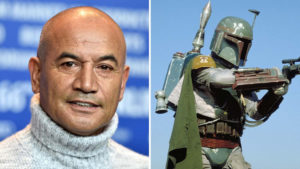 Boba Fett’s appearance in the show’s upcoming second season is all but confirmed, with Temuera Morrison’s agents eager to let everyone know he’s been cast despite Disney’s pleas for secrecy. I’ve been cautious of Boba’s long rumoured return for some time but I’ve recently begun to get excited by the idea because of his status as a non-Mandalorian. For his appearance to be successful it has to be more than mere fan service and instead thematically connect to the journey of the eponymous Mandalorian. The question shouldn’t just be who could appear in the series, but why. Why introduce Boba Fett at this time. The key lies not only with Boba but with the man currently wearing his armour: Cobb Vanth.
Boba Fett’s appearance in the show’s upcoming second season is all but confirmed, with Temuera Morrison’s agents eager to let everyone know he’s been cast despite Disney’s pleas for secrecy. I’ve been cautious of Boba’s long rumoured return for some time but I’ve recently begun to get excited by the idea because of his status as a non-Mandalorian. For his appearance to be successful it has to be more than mere fan service and instead thematically connect to the journey of the eponymous Mandalorian. The question shouldn’t just be who could appear in the series, but why. Why introduce Boba Fett at this time. The key lies not only with Boba but with the man currently wearing his armour: Cobb Vanth.
In the Aftermath books, it’s heavily implied that Boba Fett’s armour was purchased from some scavenging Jawas by a former slave called Cobb Vanth. Vanth then wore the armour and became the sheriff of a makeshift settlement called Freetown on Tatooine, housing former victims of the planet’s crime-ridden past. Again, while unconfirmed, everything we know about Timothy Olyphant’s casting in the second season screams Cobb Vanth and, if Boba is to appear, so too will the man in possession of his armour. It’s the dynamic between these three men – Din Djarin, Boba Fett and Cobb Vanth – that supersedes any claim of fan service or canon porn surrounding Fett and Vanth’s appearances. Throughout the first season, Din was exploring what it means to wear the armour and now the show can contrast that with two other characters who wear the armour, but for radically different reasons.
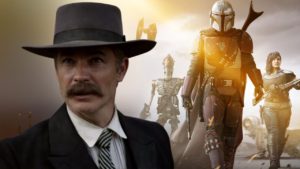 Boba doesn’t wear the armour as some symbol of the creed it represents but instead to honour his father and, well, look badass. It’s the coolest and best equipped suit in the galaxy and he’s stolen the Mandalorian iconography purely for personal gain, something Din will have a strong reaction too. He, and maybe Vanth too, would be angry about using the armour simply to inspire fear. Vanth however uses the armour to inspire hope and fight oppression. Whether or not Din has an issue with him wearing the Beskar, at least he has noble intentions. To don the armour is to represent Mandalore. Cobb Vanth stands for something while Boba only stands for himself – or his father who is literally himself because of cloning. It’s the perfect time to include these characters because while understanding why others wear the armour, Din will further come to terms with what wearing the Mandalorian armour means to him.
Boba doesn’t wear the armour as some symbol of the creed it represents but instead to honour his father and, well, look badass. It’s the coolest and best equipped suit in the galaxy and he’s stolen the Mandalorian iconography purely for personal gain, something Din will have a strong reaction too. He, and maybe Vanth too, would be angry about using the armour simply to inspire fear. Vanth however uses the armour to inspire hope and fight oppression. Whether or not Din has an issue with him wearing the Beskar, at least he has noble intentions. To don the armour is to represent Mandalore. Cobb Vanth stands for something while Boba only stands for himself – or his father who is literally himself because of cloning. It’s the perfect time to include these characters because while understanding why others wear the armour, Din will further come to terms with what wearing the Mandalorian armour means to him.
I could see Din’s reaction to Boba Fett’s and Cobb Vanth’s reasons to wear the armour going one of two ways. It could push him to be an even stricter Mandalorian and enforce the code he lives by on these two men who taint what the armour stands for. Keep in mind that he’s already a Mandalorian extremist, having been raised by Death Watch and refusing to remove his helmet. Or encountering Fett and Vanth could broaden Din’s perception on what it means to wear the armour. The Mandalorian hides beneath the Beskar, becoming emotionless and cold. That is before the Child entered his life. Meeting people who wear the armour but aren’t as strict about ‘The Way’ as him, whether it be Bo Katan, Vanth or Fett, could counter his indoctrination and make him more human. He can honour the Mandalore way but not lose his humanity in the process; learn that he can be an honourable warrior like Cobb Vanth but still be able to remove the helmet and let the Child gaze upon his adoptive father’s face.
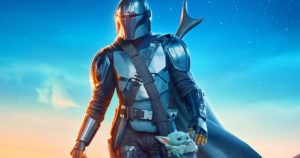 The Mandalorian could see himself in Boba, the older bounty hunter being a reflection of him, shining from dented Beskar. A Mandalorian warrior should be a person of great honour but is Din any better than Boba if he too wears the armour while being a murderous bounty hunter? Encountering Boba could be like encountering a past version of himself from before the Child entered his life, or even an unwanted future self if he doesn’t change. I’d love to see Din’s development through an actual choice he has to make: who keeps Boba Fett’s armour. Does he take it to give to his now depleted covert, leave it with Boba Fett, or allow Cobb Vanth to continue wearing it. Whatever he decides would be representative of how he feels about his own reasons for wearing the armour.
The Mandalorian could see himself in Boba, the older bounty hunter being a reflection of him, shining from dented Beskar. A Mandalorian warrior should be a person of great honour but is Din any better than Boba if he too wears the armour while being a murderous bounty hunter? Encountering Boba could be like encountering a past version of himself from before the Child entered his life, or even an unwanted future self if he doesn’t change. I’d love to see Din’s development through an actual choice he has to make: who keeps Boba Fett’s armour. Does he take it to give to his now depleted covert, leave it with Boba Fett, or allow Cobb Vanth to continue wearing it. Whatever he decides would be representative of how he feels about his own reasons for wearing the armour.
Boba too could be faced with a choice after his encounter with The Mandalorian. It’d be fascinating to see whether he’ll continue fighting for himself or if he’ll discover some greater purpose. Despite Almec’s words, Mandalore is a creed as well as a race and maybe Boba could one day become a true Mandalorian. He could continue the sins of his father or fight against them, maybe offering his insights on the Jedi, like Mace Windu who killed his father in front of him, with Din. But when you introduce Boba Fett to the show it can’t all be philosophical discussions and characters getting along. We’re going to need to see The Mandalorian and Boba Fett fight it out in spectacular fashion, and I imagine the conflict will begin with Boba arriving at Freetown to take his armour from Cobb Vanth after barely surviving the Sarlaac pit.
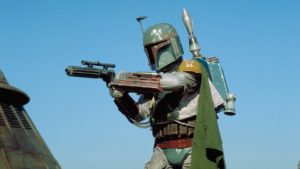 It’ll be fascinating to see in which direction they take Boba Fett’s characterisation, especially at this point in his life. So much of what we understand about his character comes from the prequels and yet we’re picking up five years after his ‘death’ in Return of the Jedi. It’s clear that Jon Favreau doesn’t care for the prequels but I hope he acknowledges Boba’s past rather than ignores it. Whether you like it or not, Boba is no longer the faceless, mysterious bounty hunter the original films presented and treating him as such would waste so much brilliant story potential. But, for every original trilogy connection that Favreau inserts, Dave Filoni is there to add a pit droid and keep the prequel flame alight.
It’ll be fascinating to see in which direction they take Boba Fett’s characterisation, especially at this point in his life. So much of what we understand about his character comes from the prequels and yet we’re picking up five years after his ‘death’ in Return of the Jedi. It’s clear that Jon Favreau doesn’t care for the prequels but I hope he acknowledges Boba’s past rather than ignores it. Whether you like it or not, Boba is no longer the faceless, mysterious bounty hunter the original films presented and treating him as such would waste so much brilliant story potential. But, for every original trilogy connection that Favreau inserts, Dave Filoni is there to add a pit droid and keep the prequel flame alight.
Boba is an inherently cool character from the design alone but at this point in the franchise, after giving a Mandalorian his own show and seeing legions of the armoured warriors do battle in The Clone Wars and Rebels, Boba Fett has potential to be a different and much more interesting character than the one presented in 1980, and it all stems from Almec’s words. Despite the armour, he’s not a Mandalorian and so what will that mean when he comes face-to-face with the Mandalorian?
Are you excited for Boba Fett’s upcoming appearance in The Mandalorian? Let me know in the comments, speculate responsibly and be sure to geek out with me about TV, movies and video-games on Twitter @kylebrrtt.




